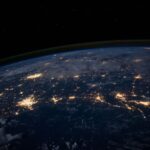In my last blog, “Inseparable: Language Quality Assurance and Translation“, I discussed the positive effects of language quality assurance in the source text on the translation result. Today I would like to address something that is versatile and works wonders: terminology management.
The right terminology
Before we dive into the topic, we first must talk about the correct terminology. What exactly is the difference between a word, a concept, and a term? It is not at all easy to stay on top of things, but the Lexikon der Sprachwissenschaft (Bußmann: 2008) provides a helpful explanation: “[…] On a lexical-semantic level: words are the smallest, relatively independent carriers of meaning”. A concept is “[t]he mental concept obtained through abstraction, by which objects or facts are classified based on certain properties and/or relationships. Concepts are represented by terms.”
What is it, really?
Put simply, terminology is an inventory of technical terms whose use occurs in a closed system and thus differs from their use in everyday language. Such systems can be found in all types of areas. A prime example would be medicine, with its Latin technical terms. However, these closed systems can also be found elsewhere: in companies.
Terminology management in Corporate Communications
Companies can benefit from terminology in a variety of ways, as standardized use increases consistency, and consistency increases understandability. Especially with marketing texts, linguistic consistency is key in creating a uniform and credible brand or product image. A uniform brand image ensures that both customers and potential customers are more convinced of a product or brand and perceive it more positively. The same positive effect (understanding, positive perception of the company) can also be triggered using terminology with internal communications.
Terminology management in Technical Documentation
While consistent and clear terminology is an advantage in marketing, it is a must in technical documentation. Even if the normative character of this text type remains, terminology ensures that consistency and understanding are increased, and misunderstandings are significantly minimized. In addition, technical documentation appears more reliable and credible if the same term is always used for a tool.
How-To
A good starting point is to centralize terminology management or to assign responsibilities to one or a select few people. This creates a central point of contact for all issues. At this point, it is a good idea to create a guide that defines how terms are formed and what criteria terms should meet. The next step is to define process. Furthermore, it is also important to look at management systems at an early stage to create the conditions for high-quality terminology work from the very beginning.
How does terminology grow?
Terminology can always be determined by term extraction. But there are also possibilities to enrich the terminology in the content creation or translation process. Authors, translators, and reviewers can suggest terms at various points in the process. The terminologist receives the suggested terms and decides whether to include them in the terminology, completes and defines them. It is even more efficient to choose a terminology management system that also offers coordination workflows. In this way, all coordination of term proposals, requests and entries takes place centrally and transparently in one tool.
Terminology for all!
Once a management system has been introduced, the next step is company-wide provision of terminology. A goal that is easy to achieve today with web-based applications. This step is crucial in increasing terminological consistency in all texts throughout the company and in raising your company’s presence to a new level.
Sounds good? Then you are welcome to contact us. We will be happy to support you in the introduction of terminology management, the selection of tools or to work out your ideal process with you!
Image by Lindsay Henwood on Unsplash




